Deir Mar Jerjes, Deir Mar Jerjes, also known as the Monastery of Saint George, is one of the oldest and most revered Christian sites in Syria. Located near Al-Mishtaya in the Valley of the Christians (Wadi al-Nasara) west of Homs, it stands as a lasting symbol of faith and heritage. Dedicated to Saint George, the famous Christian martyr, Deir Mar Jerjes dates back to the 6th century AD during the Byzantine era. Though restored many times, especially in the Byzantine and Crusader periods, it has preserved its sacred and tranquil atmosphere. Over the centuries, Deir Mar Jerjes has remained a beacon of faith, history, and architecture, welcoming pilgrims and travelers seeking spiritual and cultural inspiration.
Quick Info. Deir Mar Jerjes
| Topic | Quick Info |
|---|---|
| Name | Deir Mar Jerjes / دير مار جرجس |
| Location | About 60 km west of Homs, in the Valley of the Christians (Wadi al-Nasara), Syria |
| Era / Founded | 6th century CE (Byzantine era) |
| Religious | Greek Orthodox |
| Nearest Village | Al-Mishtaya |
| Builder / Patron | Believed to have been built during Emperor Justinian’s reign |
| Current Function | Active monastery and pilgrimage site |
| Accessibility | Reachable by car from Homs, Damascus, or Tartus |
| Surroundings | Olive groves, pine forests, and mountain scenery |
| Significance | One of Syria’s oldest Christian monasteries, dedicated to Saint George, blending spirituality, history, and nature |
Location and How to Get There
The monastery is situated approximately 60 kilometers west of Homs and is accessible by car from major Syrian cities such as Damascus or Tartus. The route to the monastery winds through the scenic Valley of the Christians, a region filled with olive groves, pine forests, and small villages. The nearest large village is Al-Mishtaya, which also offers basic amenities for tourists. Private vehicles or hired taxis are the most convenient methods of transportation, though local buses might also be available from nearby towns. Most visitors find the journey to be as rewarding as the destination itself, with stunning views of Syria’s green highlands.
Architecture and Structure
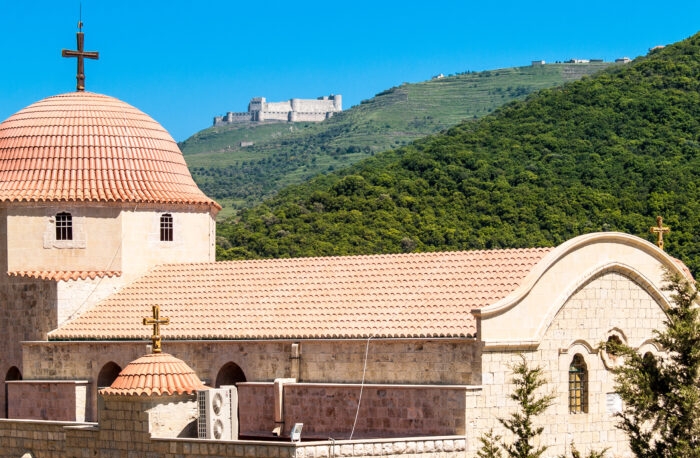
The architecture of Deir Mar Jerjes blends Byzantine, Romanesque, and Levantine styles, built from large cut stones that give it a strong, majestic look. Its thick walls and small windows hint at its dual role as a sanctuary and a fortress. The central church, adorned with ancient icons, oil lamps, and frescoes, offers a simple yet spiritual atmosphere. At its core lies a small chapel believed to mark the cave where Saint George once took refuge. Stone arches, columns, and the altar highlight the craftsmanship of early Christian builders, while nearby quarters, a guesthouse, and a courtyard overlook the scenic valley.
Religious Significance and Pilgrimage
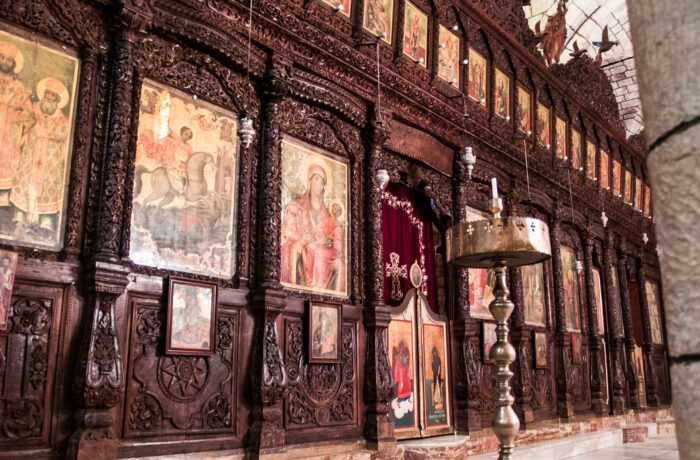
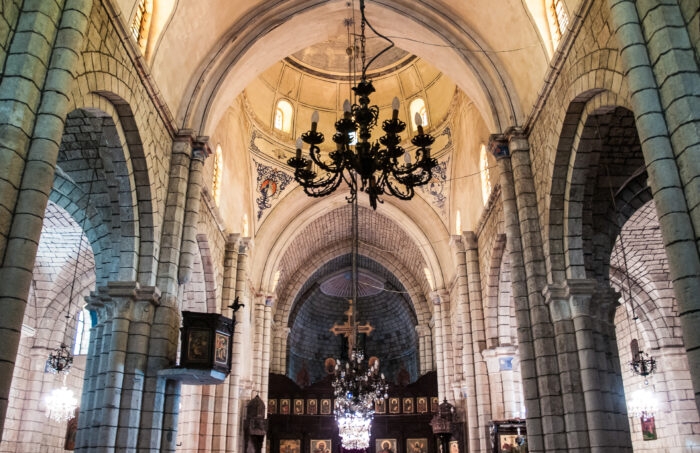
Saint George, or Mar Jerjes in Arabic, is a central figure in Christian lore, especially in the Eastern Orthodox and Oriental churches. He is often portrayed slaying a dragon, symbolizing the triumph of faith over evil. The monastery is believed to hold relics associated with the saint, making it a site of pilgrimage not just for Syrians but for Christians from neighboring countries as well. Every year, particularly around the feast of Saint George on April 23, thousands of pilgrims visit the monastery to light candles, pray, and participate in religious ceremonies. Even non-Christians are welcome, and many Muslim visitors also pay their respects to the saint, reflecting the spirit of interfaith harmony that the region has traditionally enjoyed.
Best Time to Visit
The best time to visit Deir Mar Jerjes is during the spring and autumn months, especially from March to May and from September to November. During these periods, the weather is mild and the surrounding countryside is at its most beautiful, with blooming wildflowers and clear skies. Summer months can be hot, especially in July and August, while winter may bring rain and make travel slightly more difficult, though the area rarely experiences snow. If you’re interested in cultural and religious events, visiting during Saint George’s feast day in April is ideal.
What to Expect During Your Visit
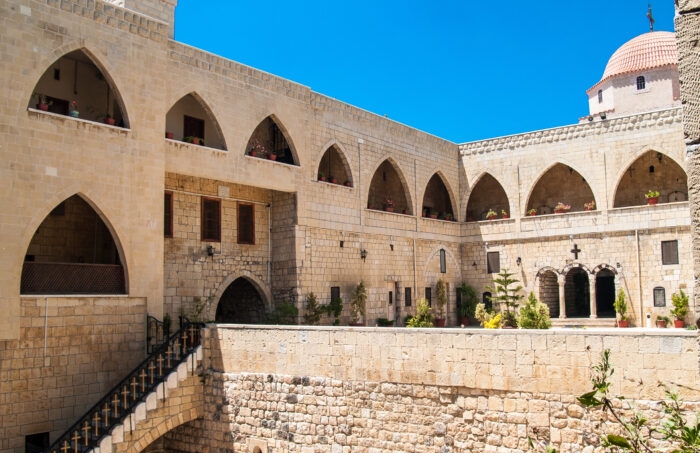
Visitors to Deir Mar Jerjes will find a serene and spiritual atmosphere, far from the bustle of city life. The air carries the scent of incense and the sound of distant bells, creating a peaceful setting for reflection. Entry is free, though donations are appreciated. Modest clothing is recommended, and women may be asked to cover their heads inside the church. Photography is allowed in the courtyard but should be requested before taking pictures indoors or during prayers. The monks are welcoming and often share insights about the monastery’s history, especially for those who speak Arabic or have a guide. A small shop sells candles, icons, and handmade souvenirs for visitors.
Local Culture and Traditions
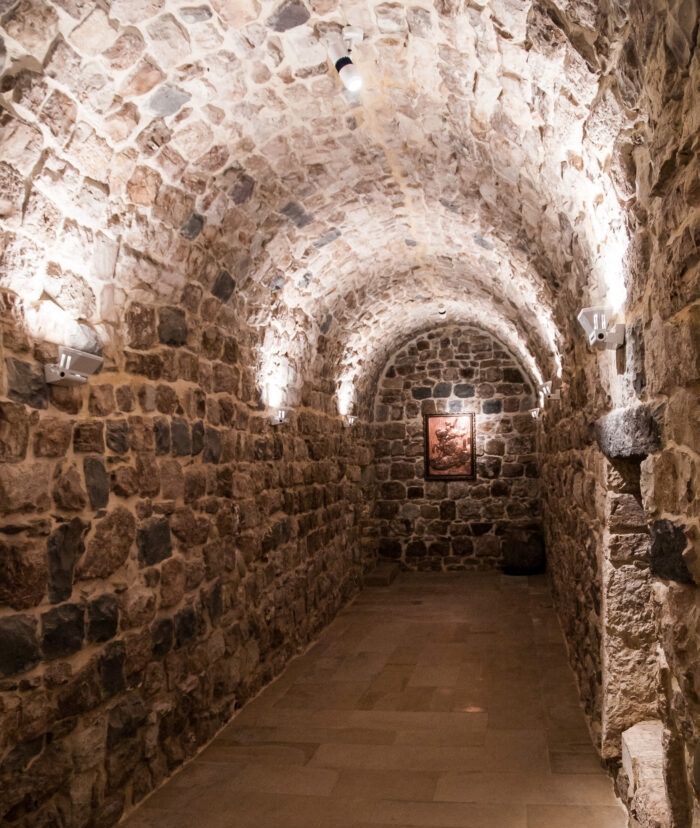
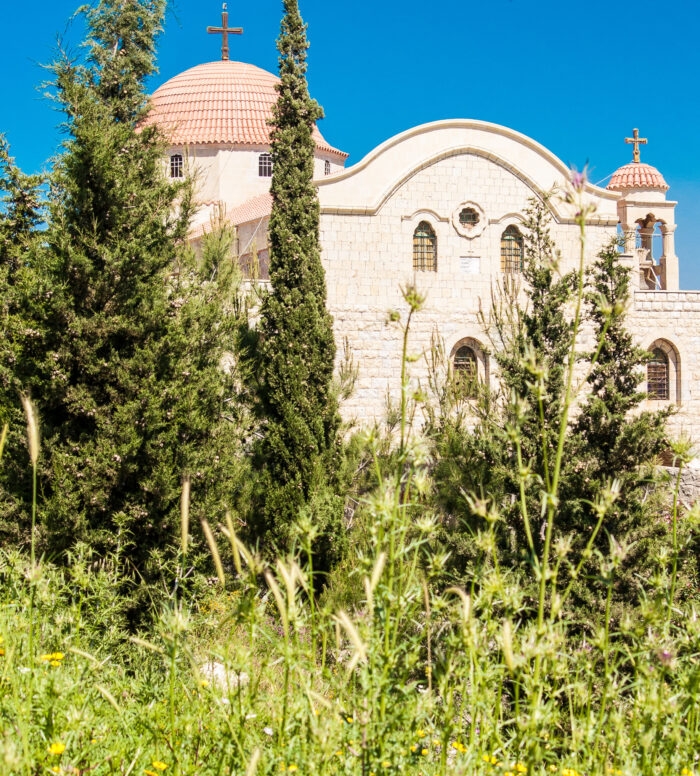
The Valley of the Christians is known for its warm hospitality and strong cultural identity. The local population is predominantly Christian, and visitors will find that religious customs are deeply rooted in daily life. Traditional Syrian dishes such as kibbeh, grape leaves, tabbouleh, and lamb stew are commonly served in nearby village restaurants. Coffee and sweet desserts like baklava are often offered to guests as a sign of welcome. The area is also known for its religious music, handicrafts, and annual festivals that blend spiritual and cultural elements. Learning a few Arabic greetings like “Marhaba” (hello) or “Shukran” (thank you) will go a long way in connecting with the local people.
Nearby Attractions
Deir Mar Jerjes is located in a region rich with other historical and religious landmarks. Just a short drive away is the famous Krak des Chevaliers, a UNESCO World Heritage Site and one of the best-preserved Crusader castles in the world. Other notable monasteries in the valley include Deir Mar Elian and Deir Saydnaya, each with its own history and charm. Nature lovers can enjoy hiking in the nearby hills or exploring the rural countryside dotted with ancient ruins and terraced farmlands. For those staying overnight, guesthouses in Al-Mishtaya or nearby Safita offer rustic but comfortable accommodation.
Tips for Tourists
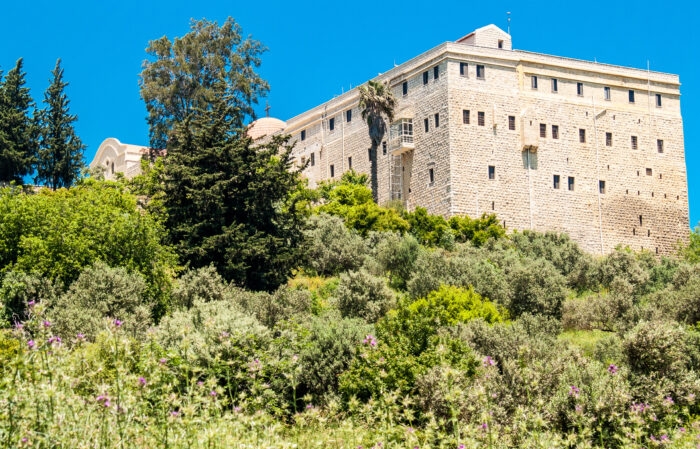
Before visiting Deir Mar Jerjes, check the current security situation, as some areas of Syria may be unstable. Travel with a local guide or tour operator familiar with the region, and carry your passport or ID. Respect local customs and religious practices, bring cash, and wear comfortable shoes. A water bottle and some knowledge of Saint George’s story will enhance your visit. Take your time—Deir Mar Jerjes is not just a historic site, but a living place of faith inviting reflection and cultural respect.
A Final Word
Deir Mar Jerjes is a remarkable testament to Syria’s rich religious heritage, offering a profound experience for those who seek history, faith, and serenity. The ancient walls of Deir Mar Jerjes whisper stories of resilience, devotion, and shared humanity that span centuries. Whether you are a pilgrim, a historian, or a curious traveler, a visit to Deir Mar Jerjes promises a lasting impression, touching both the heart and the mind.
Finally.. If you have any questions, please contact us. To explore further, visit our Facebook Syria collection for rare images and cultural highlights.
Sources & References:
UNESCO – World Heritage Centre: https://whc.unesco.org
Archnet – Architecture & Heritage Database: https://www.archnet.org
World History Encyclopedia: https://www.worldhistory.org
Syrian Heritage Archive Project: https://syrian-heritage.org
Global Encyclopedia: Wikipedia



